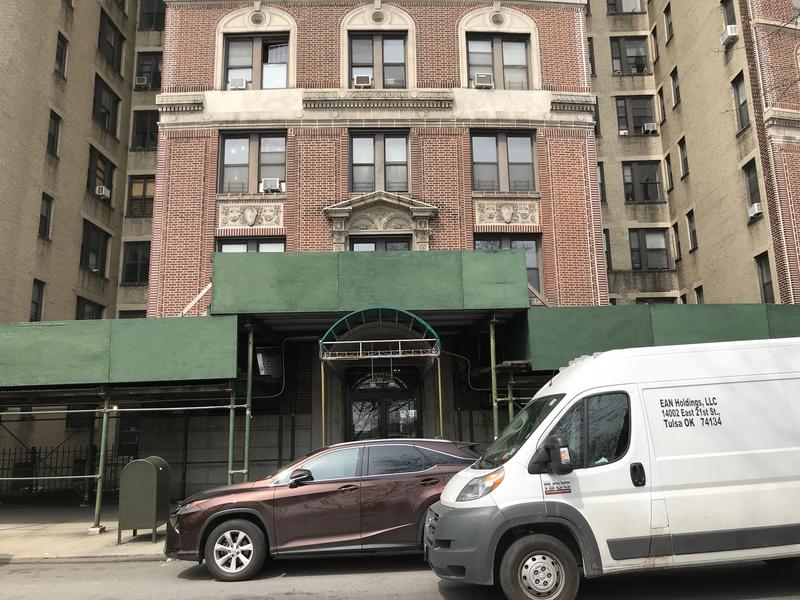
409 Edgecombe Avenue has plenty of history: the Sugar Hill apartment building was home to luminaries of the Harlem Renaissance, including Thurgood Marshall, William Stanley Braithwaite, and W.E.B. Du Bois.
It's also home to the oldest sidewalk scaffold in New York City.
Officially called "sidewalk sheds," the wood-and-metal structures are some of the most detested features of the New York City streetscape. They're bulky, ugly, and block out sunlight. In recent years, the city Department of Buildings has released annual maps of all sidewalk scaffolds with permits throughout the five boroughs in order to pressure building owners to dismantle them in a timely fashion. The department promises that the most recent version will be updated in real-time as scaffolds are erected and dismantled.
"Real-time mapping not only increases our ability to monitor structures such as sidewalk sheds, but also shows how we are harnessing technology to hold building owners accountable,” Buildings Commissioner Rick Chandler said in a statement.
While the map is a good tool for figuring out how long a scaffold has been around, the reason why can be complicated. The shed at 409 Edgecombe was erected nearly 20 years ago, when its facade was being renovated. Just before the work was finished, the building was struck by lightning, according to the building's board president, Nikki Berryman.
"The DOB did not allow us to take the scaffold down until the additional work to the areas that were cracked and struck by lightning were completed, but we were out of funds," Berryman said.
Berryman said the tenants spent years raising the money to complete the repairs, which she hopes will be done by the end of the summer. Then, at long last, the scaffold should come down. In the meantime, she and the Buildings Department agree: the structures may be ugly, but sometimes they are necessary.
